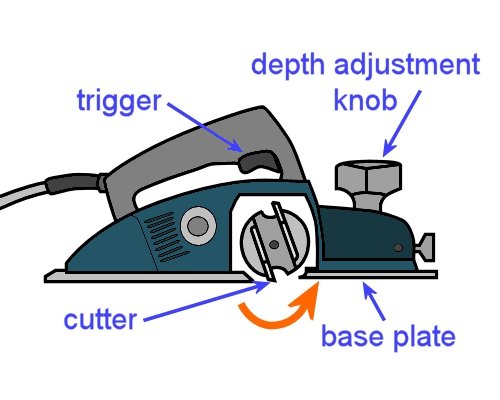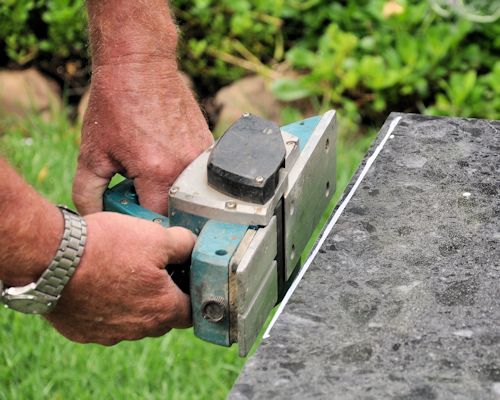Planer operation
 Audio for slide 1 (mp3 |6|KB)
Audio for slide 1 (mp3 |6|KB)
But you need to be very careful when you use them.
In floors, always double-check that there are no hidden nails, screws or other hard objects that might hit the cutters.
If the cutters strike anything hard while they're turning, it can damage them in an instant.

 Audio for slide 2 (mp3 |6|KB)
Audio for slide 2 (mp3 |6|KB)
You also need to clamp the door firmly to a bench or saw stool so it doesn't move while you're working.
In general, be extremely careful while the planer is running.
The cutters are unguarded, and will cut anything that comes into contact with them - timber, floor coverings, clothing, fingers and anything else.

 Audio for slide 3 (mp3 |6|KB)
Audio for slide 3 (mp3 |6|KB)
Before you put the planer down, make sure the cutters have stopped turning.
Always disconnect the planer from the power source before clearing out shavings or checking the cutters.
You can either lay it on its side, or put it on a soft material that won't damage the cutters.
Remember, the cutters are razor sharp, which makes the edge quite fragile if it is bumped against hard surfaces.
The link below will take you to a basic SOP for a planer.


Learning activity
Audio 4 (mp3 |6|KB)Point 5 in the SOP says you should plane in the direction of the grain.
Note that this applies to solid timber, such as the tongue and grooved timber floor boards. It's not an issue when you're planing particleboard, plywood, MDF or other materials that don't have a distinctive grain direction.
What would happen if you planed solid timber against the grain? That is, what would the finished surface look like?

 Go to Circular saw operation
Go to Circular saw operation